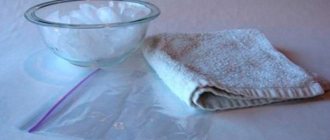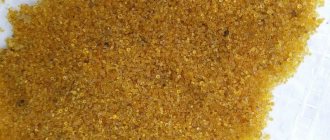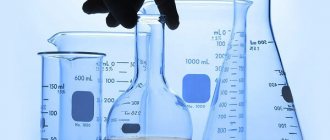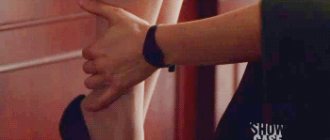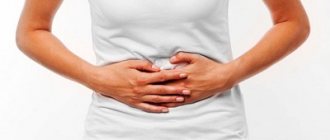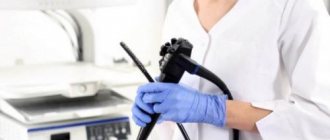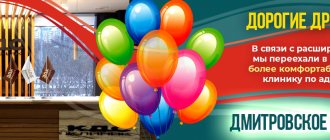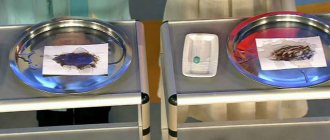Physiotherapy is a method of treating diseases using various physical factors, such as heat, cold, electric current, magnetic UV and IR radiation, as well as using therapeutic mud, massage, and hirudotherapy.
Thanks to physiotherapy alone, it is difficult to achieve a complete cure; it has a visible effect only in the first stages of the development of the disease, however, we advise using physiotherapy as an aid in the fight against a wide variety of ailments.
In addition, practice shows that physiotherapeutic procedures can be used to prevent diseases, as they help strengthen the immune system and activate important biochemical processes occurring in the body.
Massage
It is a mechanical effect on the human body using hands, tools or special devices.
This method has been used to treat, relax, and strengthen the body for thousands of years. Today we offer our patients many types of massage. Of course, like any medical procedure, massage has contraindications, so we advise you to consult a doctor before making an appointment with a massage therapist. The most popular type of massage is general health massage. It helps improve blood microcirculation, which, in turn, promotes better nutrition of tissues and internal organs. Our patients note that a general wellness massage improves muscle tone, helps to relax and get rid of fatigue.
Anti-cellulite massage is often used as an aid in the fight for a slim figure - the massage therapist helps to establish lymph circulation, which helps to increase skin turgor and burn subcutaneous fat. After a course of anti-cellulite massage, the skin becomes more toned and smooth.
Acupressure may seem somewhat painful, but it perfectly helps with headaches, diseases of the nervous system, and endocrinological diseases. Reflex segmental massage is a method of influencing the internal organs of a person through special projection zones. So, by doing a back massage, you can reduce pain in the elbow joint, hand or shoulder.
Cosmetic facial massage is an excellent way to preserve youthful skin. It helps make it more elastic, improve blood flow in the tissues, which contributes to a better complexion and smooth out wrinkles.
There are many more massage techniques that can cope with a variety of diseases, relieve unpleasant symptoms, and strengthen the body. Don't neglect these procedures, they will really help you feel better.
Types of simple physiotherapy
The simplest physiotherapy is the effect on the human body for therapeutic purposes of various natural factors: heat, cold, water, light. Mustard plasters are sheets of thick paper covered with a thin layer of mustard powder. They are used as a means of simple physiotherapy in the presence of the following indications:
- tracheitis;
- bronchitis;
- pneumonia;
- hypertensive crisis;
- angina pectoris.
Mustard plasters should not be used for fever, skin diseases, pulmonary hemorrhage, or cancer.
The heating pad is used for the purpose of local warming of individual areas and the entire body, for the resorption of chronic inflammatory foci. The heating pad should not be used for abdominal pain, bleeding, skin damage, or during the first 24 hours after an injury. Particular care must be taken when using a heating pad for weakened and severe patients, patients with impaired temperature sensitivity, since under the influence of high temperature they may experience a burn.
An ice pack is used for high fever, bleeding, acute inflammatory processes in the abdominal cavity, during the first day after a bruise. The compress is a multi-layer bandage. Compresses can be wet or dry, local or general. Wet compresses can be cold, warming or medicinal.
A cold compress is used during the first hours after a bruise, for fever or nosebleeds. A warming compress causes a resolving and analgesic effect. Indications for the use of a warm compress are inflammation of the middle ear, joints, and bruises. Contraindications for applying a warm compress are the following: increased body temperature, pustular and allergic skin rashes. Sometimes various medications are used to wet gauze. In this case, the compress is called medicinal.
Treatment with electricity
Using procedures based on the action of electric current, such as phonophoresis, galvanization, electrophoresis, we can send the medicine exactly to the place where its action is important, and in the smallest doses that will not cause damage to the body.
This method helps to avoid addiction to medications. Darsonvalization is an effective way to improve blood circulation in tissues, which is used in cosmetology, in the treatment of skin diseases, as an auxiliary method in the fight against hypertension, gynecological diseases, and sleep disorders. During darsonvalization, the doctor sends high-voltage alternating current pulses through special electrodes. The procedure is almost imperceptible to the patient, but the positive effect is usually noticeable after the first procedure.
Physiotherapy in Moscow and the Moscow region
Physiotherapy helps:
- improve the patient's condition;
- reduce the duration of treatment;
- speed up the recovery process;
- reduce the dosage of medications;
- ensure a lasting therapeutic effect.
All procedures are carried out in modern comfortable premises under the supervision of experienced doctors and caring nursing staff. The price of a course of physiotherapy depends on the number of procedures, type of equipment and other factors.
To receive effective treatment, schedule a consultation with a physical therapist by phone or online.
Heat and cold treatment
Warming up using UV radiation or microwaves is a way of combating respiratory diseases known to everyone since childhood.
We recommend using inductothermy or heating with high-frequency currents to combat neuroses, and UHF therapy to treat sinusitis. Cryotherapy is a cold treatment that typically uses liquid nitrogen. Exposure to low temperatures helps activate the body’s internal forces to fight illnesses: strengthens the immune system, relieves swelling, spasms, reduces pain symptoms, rejuvenates and promotes the release of endorphins into the blood.
Physiotherapy on Andro-Gyn device
Innovative methods of physiotherapeutic treatment include a modern system of physiotherapy - the Andro-Gyn complex. The device allows you to use the influence of several physical healing factors:
- semiconductor laser and LED radiation;
- electrical stimulation;
- magnetic therapy;
- neurostimulation;
- color rhythm therapy.
The Andro-Gyn complex is intended for the treatment of:
- chronic inflammatory diseases of the prostate gland (prostatitis), urethra, seminal vesicles, complicated by dysuric and pain syndrome;
- male infertility;
- erectile dysfunction;
- prostate adenomas;
- urinary incontinence.
The complex is used to treat chronic nonspecific inflammatory diseases of the pelvic organs, female infertility, genital infantilism, and urinary incontinence. It is used to prevent miscarriage. More information about Andro-Gyn therapy in Moscow and its cost can be found on the Internet.
Magnetic field treatment
Magnetotherapy has a strengthening effect on the body, improves metabolic processes in cells and tissues, normalizes blood pressure, helps improve blood supply to the brain and oxygen saturation.
The functioning of all body systems - endocrine, lymphatic, nervous, cardiovascular and others - improves under the influence of a magnetic field. The body's internal reserves are activated, which is expressed in a feeling of vigor, improved appetite, sleep, and increased performance. Indications for magnetic therapy include sleep disorders, depression, diseases of the respiratory system, digestive system, and gall bladder.
Contraindications
The use of physical factors has limitations. Absolute contraindications include:
- hyperthermia (increased body temperature, feverish state);
- hemorrhagic, myeloplastic, hemolytic syndromes;
- epileptic syndrome;
- cardiac, vascular, respiratory, hepatic, renal failure in the decompensation phase;
- cachexia.
Relative contraindications are:
- systemic blood diseases;
- state of alcohol and drug intoxication;
- pregnancy (2–3 trimesters);
- emergency conditions for infections;
- acute period of certain diseases (heart attack, stroke).
Ultrasound treatment
Like electric current, ultrasound can administer a variety of medications.
In this way, we can significantly delay the period of addiction to the medicine and reduce the possibility of negative effects of the drug on the body. Ultrasound is capable of breaking down fat molecules, which is why it is often used in the fight against cellulite. In addition, it helps get rid of infiltrates and compactions and prevents the formation of adhesions after operations. Physiotherapy is not a panacea, but the impressive list of positive effects from the procedures makes us recommend it to patients with a wide variety of diagnoses. Of course, one single procedure will not bring significant benefits, however, if you regularly undergo supportive physiotherapeutic courses, you will notice that illnesses recede, and your mood improves, as does the body’s resistance to various ailments.
Therefore, you should not ignore the doctor’s instructions: taking a cold pill or casting a fracture, of course, is absolutely necessary, but a complete recovery can only be ensured by a set of measures, which includes physical therapy.
Of course, visiting a physical therapy office takes time, but health is much more important than any entertainment.
Rehabilitation for gastritis
Treatment and rehabilitation for gastritis - basic principles
Gastritis is an inflammatory disease of the gastric mucosa. It can be acute and chronic. The causes of acute gastritis are the effects of a wide variety of factors: chemical, mechanical, thermal and bacterial, which cause damage to the gastric mucosa. Also, gastritis can be either a primary disease in itself or a secondary one - as a consequence of a number of infectious and non-infectious diseases (as complications of severe infectious and somatic diseases, massive burns, acute renal failure, radiation injuries, etc.).
Chronic gastritis is a chronic, recurrent focal or diffuse inflammation of the gastric mucosa, prone to progression, development of atrophy, insufficiency of gland secretion and, as a consequence, digestive disorders. The main causes and types of chronic gastritis are autoimmune gastritis, infectious (associated with the presence of bacteria in the stomach - Helicobacter pylori) and reactive gastritis (or chemical - due to the effects of medications - cytostatics, non-steroidal anti-inflammatory drugs, antibiotics) or with duodenogastric reflux (reflux of bile from the duodenum to the stomach). Depending on the causes and nature of the disease, rehabilitation for gastritis is developed.
General approaches to treatment and rehabilitation for gastritis
Treatment and rehabilitation for gastritis is complex. All activities include several stages:
- drug treatment. Aimed at relieving the inflammatory process, at the cause of inflammation.
- Therapeutic exercise (both at the outpatient stage and at the stage of sanatorium-resort treatment). There are no specific indications or directions. Enough walking, therapeutic exercises, and active sports games.
- Diet - therapeutic nutrition and strict regimen.
- Elimination of occupational and other hazards.
- Physiotherapy - electrophoresis of drugs, diathermy, mud therapy, hydrotherapy
- Local effect on the gastric mucosa.
Therapeutic exercise for chronic gastritis
During periods of exacerbation and pain, physical therapy is not prescribed. Immediately after the exacerbation is relieved, exercises for the abdominal muscles with a medium load are prescribed. In addition to them, walking in combination with breathing exercises is recommended.
In the hospital, a course of exercise therapy consisting of 10 - 12 sessions is carried out. A set of exercises is carried out one and a half to two hours before meals, as well as 20 minutes before drinking mineral water. Duration of classes is 20 - 25 minutes.
In addition to exercise therapy, segmental massage is effective for chronic gastritis. The effect is exerted on the paravertebral zones in the region of the 3rd - 8th cervical vertebrae. Course duration is 8 - 10 procedures. All of the above means of massage and physiotherapy are effective at a later stage of rehabilitation, and can also be carried out at the stage of outpatient observation.
Physiotherapy for chronic gastritis
Physiotherapy methods in the treatment and rehabilitation of gastritis have long proven their effectiveness and are successfully used in practice. Physical factors have a beneficial effect on the functional state of the stomach and duodenum.
The most commonly used physiotherapy methods include drug electrophoresis. In case of severe pain, electrophoresis with 1 or 2% novocaine solution is prescribed. In case of severe inflammation - electrophoresis of 2 - 5% calcium solution. The procedure takes 10-15 minutes, the current is 10 mA, a total of 10-12 procedures are prescribed per course.
Also, to reduce stomach pain, as well as to relieve dyspeptic disorders, diadynamic currents - DDT - are prescribed. The impact is on the area of the anterior abdominal wall. The duration of the procedure is 6 - 12 minutes, the current strength is 6 - 10 Ma.
Electrotherapy methods (especially pulsed currents DDT and SMT) help not only reduce pain. They also stimulate the secretory function of the stomach and promote an increase in the activity of food enzymes.
Effective methods are also the methods of DMV, SMV and IKV. As well as ultrasound treatment, although in practice these methods are used less frequently. When prescribing these techniques, it is necessary to take into account the level of secretion, and it is also advisable not to prescribe them during the period of exacerbation of the disease.
Separately, it is worth noting such an effective technique as laser therapy. The laser affects both locally, on the epigastric region, and on segmental zones.
Magnetic therapy has also proven its effectiveness and can be prescribed for the treatment and rehabilitation of stomach diseases. It is worth noting that this technique is the most “soft” and is well tolerated by patients. Also, when prescribing magnetic therapy, there is no need to take into account the level of secretory activity.
Natural healing factors and balneotherapy
One of the most effective natural factors in the treatment of gastritis is drinking mineral water. Mineral waters are selected according to the type of mineralization and the type of effect on secretion. For patients with high acidity, water is prescribed 60-90 minutes before meals, with normal levels 40-45 minutes. Dosage - 2 - 3 ml per 1 kg of body weight.
This is my traditional diet of mineral water. I try to stick to one bottle a day.
Patients with normal or high acidity levels should take mineral water heated.
With an increased level of secretion and acidity, low and moderately mineralized waters should be prescribed - sodium bicarbonate, sodium-calcium bicarbonate, magnesium-calcium.
Balneotherapy in the form of sodium chloride or sea baths with a mineralization of 20 - 30 g/l also has an effective effect.
An effective treatment method for inflammatory diseases of the stomach is mud therapy. Its use is advisable when the clinical picture is dominated by severe pain. Both silt and sapropel therapeutic mud are used.
Balneological procedures can be prescribed not only during the treatment of an exacerbation, but also in the form of prevention and at the secondary level of rehabilitation. It is worth considering that all of these methods are contraindicated in patients with polyposis of the gastric mucosa, as well as patients with rigid antral gastritis. The priority for such patients is treatment in gastroenterological sanatoriums.
Physiotherapeutic methods
Electrosleep can be used in complex therapy of the disease.
For gastritis, a doctor may prescribe the following procedures:
- Vegetocorrective: electrosleep therapy;
- electroanalgesia;
- aerotherapy.
- UHF;
- laser treatment;
- paraffin therapy;
- pine and nitrogen baths;
- balneotherapy;
- ILBI;
Electrophoresis
Papaverine solution is used as an antispasmodic during the procedure.
50-100 ml of 0.25-0.5% novocaine solution is used as an antispasmodic. Galvanization of the stomach area is performed at current parameters of 0.05 mA/sq.cm. To enhance the antispasmodic effect, add 2 ml of a 2% solution of papaverine or 10 drops of 0.1% atropine. It has a vasoactive and antispasmodic effect on the neuromuscular connections of the damaged area. The session lasts 16-20 minutes. Electrophoresis is carried out every day or once every 2 days. The duration of the physiotherapy course is 10-15 sessions.
Immunomodulation
Treatment methods are presented in the table:
| Procedure | Features of the event | Course duration |
| SMV therapy | Low frequency exposure to low heat | 5-6 sessions of 10 minutes every other day |
| Thymus magnetotherapy | Action with high frequency current 27.12 MHz and 13.56 | 10-12 procedures for 9-10 minutes every other day |
| ILBI - laser blood irradiation | Intravenous administration of a component for laser quantum irradiation | 7-10 sessions with a break of six months |
Magnetotherapy
A course of magnetic therapy may require up to 15 sessions.
Through high-frequency magnetotherapeutic effects, eddy currents are formed in the gastric mucosa. As a result, arterioles, capillaries, venules expand, microcirculation and metabolism increase. In the inflamed area, tissue swelling and leukocyte activity are reduced, and regeneration processes are activated. It has an antispasmodic effect, the tone in smooth muscle fibers decreases, and the kinetic functions of the gastrointestinal tract and secretion are restored. The effect occurs over 15-20 minutes. The physiotherapeutic course consists of 10-15 sessions every day.
Ultrasound
The treatment course is 10-12 sessions every other day. Before the procedure, you need to drink an infusion of medicinal herbs, diluted with water to 0.5 liters or the same amount of water. This is necessary to push the air back and move closer to the abdominal region of the stomach. The therapy relieves pain and has a positive trophic effect. The impact is carried out on the epigastric region at an intensity of 0.4-0.6 W/sq.cm for 5 minutes. In addition, ultrasound acts on the paravertebral areas on both sides at the level of the 9th thoracic vertebra, at rates of 0.2-0.3 W/sq.cm. The duration of exposure is 3 minutes.
Vegetative-corrective methods
Physiotherapeutic techniques are presented in the table:
| Procedure | Features of the event |
| Aerotherapy | Exposure to open spaces with air for 10-15 sessions |
| Electrosleep therapy | Action on brain tissue with a duration of 0.2-2 ms of currents of 2-3 mA, with a frequency of 3-140 Hz |
| Electrical stimulation | Impact of low-frequency pulse currents on the autonomic centers and cerebral cortex |
Cryotherapy
The procedure can be carried out using liquid nitrogen.
The skin in the area of the inflamed organ is cooled at temperatures from +3 to -170 °C. Session duration is from 10 seconds. up to 6 min. Nitrogen cryotherapy is most often used. As a result, the affected area is anesthetized for up to 6 hours, swelling is eliminated, blood and lymph flow is stabilized, tissue regeneration processes are stimulated, and the immune system is activated.
UHF for gastritis
A mild ultra-high frequency electric field is applied. When placing capacitor plates, an air gap of 4 cm is used. The technique can be used during acute periods and exacerbations of gastritis. The daily duration of physiotherapy by exposure to a high-frequency electromagnetic field is 6-7 minutes. Duration of therapy - 3-5 sessions
Peloid therapy
Mud applications are applied to the abdomen and back. For physiotherapy, silt mud is used, which is heated to 37-40 degrees C, or a peat product with a temperature of up to 43 ° C. Treatment is carried out once every 2-3 days, 12-15 procedures are required. The duration of sessions with silt mud is 16-20 minutes. Duration of the procedure with peat 27-30 minutes:
Paraffin therapy
To carry out the procedure, the substance is heated.
Warm paraffin wax applications are applied to the surface of the skin to transfer heat to the tissues. Paraffin is heated to 50 degrees C. Duration - 16-20 minutes. Therapy is carried out every day or once every 2 days, 10-15 procedures are necessary. This allows you to achieve the following therapeutic effects:
- vasodilation;
- improvement of microcirculation;
- normalization of metabolism in tissues;
- acceleration of wound healing and scar resorption;
- reduction of spasms and pain.
Other techniques
For gastritis, mud baths are effective. You can use effective folk remedies for medicinal purposes. For example, pour 0.5 kg of sage into 5 liters of boiling water, leave for 3 hours. Then pour the medicine into a bath at a temperature of 36 degrees C. Therapy is carried out every other day. The duration of the course is 10 sessions of 10 minutes each. Ozone therapy is also an effective method for gastritis. The treatment promotes the restoration of tissues and cells of the body, has an anti-inflammatory and analgesic effect.
When is it held?
The tasks to be solved when prescribing physiotherapy in the complex treatment of chronic inflammation of the gastric mucosa are as follows:
- pain relief by using novocaine or platyphylline electrophoresis, paraffin, ozokerite or mud applications;
- stimulating the functioning of the glands with weak secretion through the use of sinusoidal currents and decimeter EM waves;
- restoration of motor-vegetative effects on the diseased organ through vegetative corrections;
- elimination of astheno-depressive disorders by prescribing sedative techniques;
- launching mechanisms for the formation of the correct immune response through treatment with immunomodulatory techniques.
